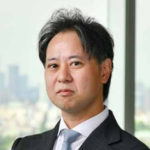Evolving Landscape of Patent Damages in Japan
20 Jun 2025 | Newsletter
While jurisdictions such as South Korea and China have introduced punitive damages systems in the context of intellectual property enforcement, Japan has maintained a compensation framework grounded in actual loss. Despite the absence of punitive remedies, recent judicial developments suggest that Japanese courts are increasingly willing to recognize substantial monetary awards in patent infringement cases. This newsletter examines a prominent court decision, analyzes statistical trends in damages, and explores what these shifts may signal for patent holders and litigants in Japan.
- Landmark Judgment: Toray v. Sawai & Fuso (May 27, 2025)
On May 27, 2025, the Intellectual Property High Court of Japan issued a landmark judgment in favor of Toray Industries, Inc. concerning the infringement of its pharmaceutical use patent for the anti-pruritic drug Remitch® OD Tablets (nalfurafine hydrochloride). The patent in question, JP No. 3531170, including two term extensions (PTEs) (JP 2017-700154 and JP 2017-700310), had remained valid through November 2022.
According to Toray’s official press release, the court awarded substantial damages for patent infringement:
- Sawai Pharmaceutical Co., Ltd.: ¥14,290,939,291
- Fuso Pharmaceutical Industries, Ltd.: ¥7,472,878,838
Totaling approximately ¥21.76 billion (~USD 140 million), this award is one of the largest in the history of Japanese patent litigation.
On the same day, the IP High Court also rendered judgment on a separate case (2024 (Gyo-Ke) No. 10033), dismissing Sawai’s petition to revoke the JPO’s decision maintaining the patent term extension for JP Application No. 2017-700154. Additionally, prior invalidation trials filed by Sawai concerning other PTEs (JP Applications 2015-700061, 2017-700309, and 2017-700310) had already been dismissed, and those PTEs were upheld.
Both defendants released public statements via their websites. Sawai Pharmaceutical described the ruling as “unacceptable,” while Fuso Pharmaceutical expressed its intention to examine the decision thoroughly and appeal to the Supreme Court.
As of early June 2025, both Sawai and Fuso were expected to file petitions to the Supreme Court. The case is therefore anticipated to proceed to the final appellate stage.
- Statistical Trends in Patent Damages (2015–2024)
According to recently updated official data compiled by the Tokyo and Osaka District Courts from 2015 to 2024, both judgments and settlements in patent infringement cases have shown a diverse distribution in awarded or agreed payment amounts.
The following chart compares the number of cases by damages range, based on whether they were resolved by court judgment or settlement agreement. Notably, settlements often result in agreed payments in the 1 million to 50 million JPY range, while high-value awards over 100 million JPY are frequently seen in court judgments.
(Source: Statistics Regarding Patent Infringement Cases (Tokyo District Court, Osaka District Court: 2015–2024), Intellectual Property High Court website)

- Legal Framework and Emerging Implications
Japanese patent law does not allow punitive damages. Compensation is restricted to actual damages under Article 102 of the Patent Act, including lost profits, infringer’s profits, or reasonable royalties.
While the law excludes punitive or statutory damages, recent court decisions suggest that the amounts awarded in some cases have increased. This development may reflect a more active use of legal presumptions and evolving judicial approaches to evidence, which in turn could modestly strengthen the enforceability and deterrent effect of patent rights in Japan.
- Conclusion
Although Japan does not permit punitive damages in patent litigation, the scale and frequency of high-value damage awards are increasing. The Toray v. Sawai & Fuso case may reflect this development and could potentially become a leading case for future patent litigation, particularly in industries involving high economic value or regulatory complexity. Companies doing business in Japan should take note of the evolving risk environment when dealing with IP enforcement and patent strategy.
